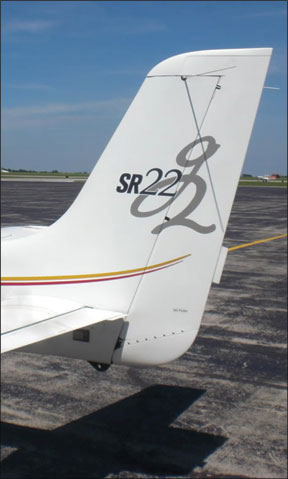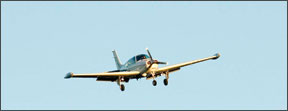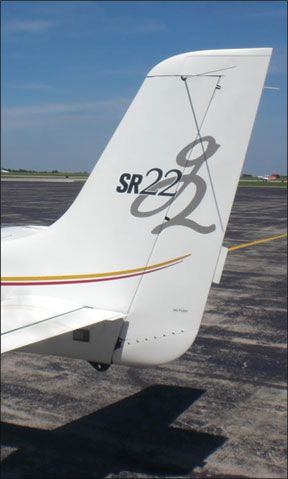Rudder coordination is vital to stall and spin avoidance, which is where most attention to rudder coordination training is focused today (with good reason). But when you develop a feel for proper rudder input, you’ll not only manage high angles of attack correctly, you’ll also get better aircraft performance all around. Yes, even in the latest airplanes, there is still a need to stress proper rudder use in all phases of flight.

288
If you’re an experienced pilot, you probably recall an instructor in your early days endlessly hounding you to “step on the ball” to coordinate with the rudder. If you’re just beginning the great adventure of personal flight, your CFI likely is trying to pound rudder coordination into you now. In both cases, there doesn’t seem to be as much emphasis on rudder coordination these days as there was in the past. This is because, I believe, most airplanes today are much more forgiving of sloppy rudder technique than, say, 40 to 50 years ago when most of today’s pilot training curriculum was developed and many of today’s pilot’s flight instructors learned to fly. Add to this that most practicing flight instructors today are much younger than that age, that the emphasis now is more focused on using cockpit technology and training to minimum standards than old-school stick-and-rudder flying, and that most airplanes flying today are better designed to handle crosswinds and adverse yaw than the trainers of earlier years, and it’s not unexpected that rudder wisdom may not be imparted with the zeal it once was.
Taming the Nosedragger
I spent some time recently watching pilots take off and land at Stearman Field, a beautiful little residential airpark just northeast of Wichita, Kan. As the name implies, the facility is home to a collection of World War II-era Stearman (really, Boeing) biplane trainers.
As I’ve pointed out to my students many times, it’s instructive to watch the rudder of a tailwheel airplane during a takeoff or landing roll. Where in a “nose dragger” (i.e., tricycle gear) airplane we generally apply a lot of rudder at the beginning of the takeoff roll and gradually reduce rudder deflection as the airplane gathers speed and increased air flow makes the rudder more effective, reversing the pattern during landing, the rudder of a well-flown taildragger is wiggling back and forth for the entire ground run for departure and arrival. I called this “dancing on the rudder” back when I conducted tailwheel checkouts.
Why the Difference?
In a tailwheel airplane, the location of the third wheel aft of the airplane’s center of gravity, as well as the reduced runway surface friction of a typically smaller “third wheel,” makes the typical taildragger less directionally stable on the ground than the usual nosewheel airplane (some aircraft with free-castering, non-steerable nose wheels are almost as directionally unstable as tailwheel types, for instance, the two-seat Grumman trainers). In directionally unstable airplanes, the pilot must constantly apply small corrections, and corrections to the corrections, to maintain runway alignment even in calm winds. The airplane is terribly unforgiving of poor rudder technique or neglect.
Pilots in tailwheel airplanes naturally become much more attuned to minor changes in rudder coordination as a result, and this constantly-reinforced habit carries over into rudder coordination in flight. Consequently, it’s commonly stated that if you want to become a good rudder pilot, get a tailwheel checkout. I contend that, given rudder coordination is equally vital in nosewheel airplanes, it’s just as possible to train and practice to become a good rudder pilot in a nosewheel aircraft. It’s just harder, because during the takeoff and landing phases—when tailwheel pilots earn most of their rudder awareness—the nosewheel airplane does not provide nearly the directional control experience, and the geometry of the landing gear tends to increase directional stability.
Therefore it’s okay (or at least not nearly as bad) to get sloppy with the rudder inputs in a tricycle-gear airplane and never develop a heightened level of rudder awareness. It is possible to “tame the nosedragger” and become just as skilled at rudder coordination. But the pilot must be more motivated to do so, because the airplane won’t force the issue.
Coordinated Performance
Rudder coordination is important in all phases of flight because uncoordinated flight significantly increases drag, reducing aircraft performance. In uncoordinated flight, the airplane is skewed into the relative wind—slipping or skidding—and the fuselage, flying slightly sideways through the air, acts as a speed brake. The control surfaces themselves, deflected into the slipstream, cause even more drag. The net effect is reduced aircraft performance, perhaps when you need it the most.

288
In the caption on page 21, I reported the noticeable performance effect of even a very slight slip/skid ball deflection in cruise flight. Imagine the effect of flying uncoordinated in an already high-drag flight regime, for instance, initial climb.
Yaw Indication, down low Do you fly a multi-engine airplane? In actual or simulated single-engine flight, you’ll find best performance comes with a little bank and a little rudder ball deflected toward the “good,” or operating engine. The maximum permitted to define single-engine emergency airspeeds in piston-powered twins is five degrees of bank and one-half to one full ball’s width toward the good engine. In most specific models of piston twin, best performance comes at something less than those extremes. See the article beginning on page 4 for additional details.
One technique for training the optimal bank/rudder combination for single-engine flight is to tape a piece of strong yarn or a long string at the lower edge of the outside of the windscreen, or on the top of the nose. When the pilot applies the proper inputs the “yaw string” points straight back or “up” the windscreen. Sailplane pilots commonly use yaw strings for the same reason (maximizing performance), and U.S. Air Force U-2 pilots reference yaw strings to properly compensate for the adverse yaw of very long ailerons far out on a high aspect-ratio wing.
Crosswinds
No discussion of rudder use is complete without talking at least briefly about crosswind takeoffs and landings. Loss of control in crosswinds rarely hurts anyone, but it very frequently damages and sometimes destroys airplanes. Taking off in a crosswind begins with full aileron deflection into the wind, with rudder as necessary to maintain runway alignment against the ensuing banking tendency and the normal takeoff propeller forces. As the airplane accelerates and increased airflow makes the controls more effective, gradually decrease the amount of control deflection. Done perfectly, you’ll have just enough control input to continue in a straight line when the airplane lifts off.
For crosswind landings, it takes enough of a forward slip (upwind wing down to prevent drift, opposite rudder as necessary) to maintain runway alignment. This is often called the “wing-low method” for obvious reasons. Done correctly, you’ll remain slightly wing low as the airplane flares and touch down on the upwind wheel first. Maintain control inputs as the airplane settles onto the other main, and gradually increase both aileron and rudder as needed as the airplane decelerates and the controls lose effectiveness. As the airplane slows to taxi speed, you should simultaneously reach the crosswind taxiing position of the flight controls.
Modern Coordination
Most “glass cockpit” airplanes have eliminated the ball-type slip/skid indicator. In its place, the standard display has become a thin horizontal line beneath a small vertical triangle at the upper center of the primary flight display (PFD).
Most likely it’s because of my limited experience in the left seat of a glass-equipped airplane, but I find it hard to use this small, indistinct reference for rudder coordination. I do it more from muscle memory and by feel (which is the training objective regardless of the slip/skid indicator design, anyway). A new student learning to coordinate the rudder would have a harder time using the panel reference on a PFD, in my opinion. This isn’t necessarily bad; it just means the student’s instructor will have to coach the student even more.
When considering modern rudder techniques and how they’re taught, two fallacies come to mind. One of them is that rudder coordination is all about stall and spin avoidance. The other is that you have to fly taildraggers to get good at rudder control. Neither accurately reflects the reality. Rudder coordination is important in all phases of flight (except when, in a slip, lack of coordination is important for a reason), and a disciplined pilot, coached by an appropriately demanding instructor, can learn proper rudder use in any rudder control-equipped airplane.
Tom Turner is a CFII-MEI who frequently writes and lectures on aviation safety.




